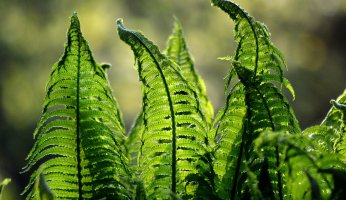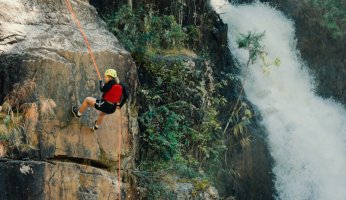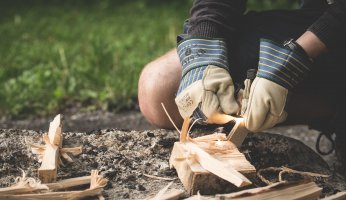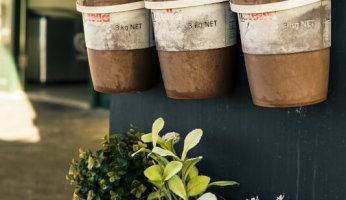Wild Food Profile: Salmonberry
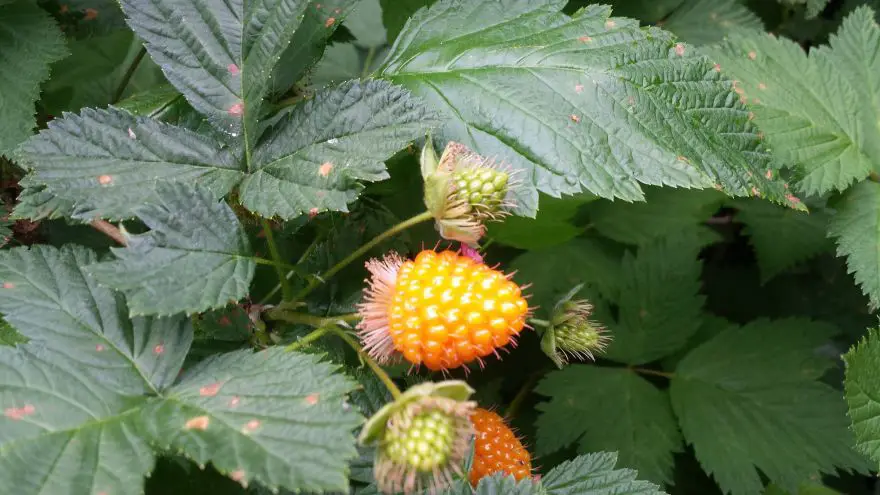 Wild Food Profile: Salmonberry
gearweare.net
Wild Food Profile: Salmonberry
gearweare.net
Taking a stroll through the temperate forests of North America’s west coast you will find that there is a particular plant everywhere you look. A plant with bright green leaves and colorful blooms providing anyone looking for a bite to eat with some truly delicious spring treats. This plant is salmonberry, a common plant found across the region and each one produces a plethora of juicy berries and edible shoots every spring. Act quickly because they are well known to foragers and equally popular. Salmonberry is easy to identify and makes a great introductory plant to learn for the beginner Pacific Northwest forager.
Botanical Profile
Salmonberry or Rubus spectabilis is a deciduous bush that can grow up to 4 m tall. Young branches are a deep reddish brown color covered in small spines and as it matures these spines disappear and the bark lightens and becomes flakey. The leaves are 2-3 cm and appear in threes. They have jagged edges, which end in a point. The flowers, one of the first to appear each spring, are bright purple and generally have five pointed petals. As spring progresses the flowers are replaced by berries resembling blackberries. They have large lobes and range from a golden yellow color to an orange-red similar to salmon roe. One of the best tips I ever received for identifying salmonberry was to look at the leaves and if they look like Colonel Sanders’ mustache and goatee then you are probably looking at a salmonberry!
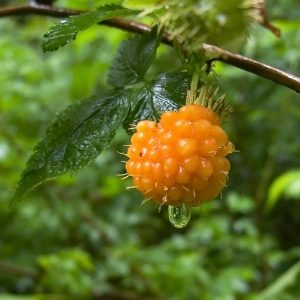
Distribution
These natives to the west coast of North America are found from central Alaska down through to the coniferous forests of Oregon and as far east as Idaho. They are found growing best in moist forests and along stream banks. When they do grow out in open fields they form large dense patches usually surrounded by alder trees.
Uses
Like other species in the genus Rubus, the tender shoots of salmonberry are edible and are collected in spring each year by Indigenous groups throughout its range. Similar to its far more popular cousin the thimbleberry these shoots provide an important spring green for traditional societies. The most common part of salmonberry to be harvested each year, however, is the juicy berry. The sweet flavour lends itself well to be added to salads, eaten fresh, made into jellies, and an especially tasty vinaigrette for those that want to maximize on its salad potential. Due to the high water content of each berry, they aren’t as useful for drying like other fruit. It is possible to use them with other berries to make fruit leathers but the amount needed makes it less efficient as just going with other choices.
Seasonality
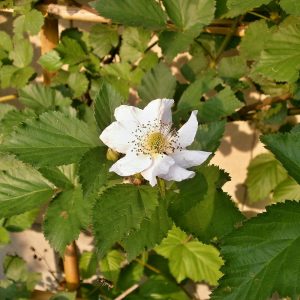
When the last of the frost disappears and the spring sun begins to warm the ground salmonberry shoots burst from the ground and new leaf buds are formed all over the dried stems of the previous year’s growth. They continue to soak up the warm spring sun building up enough energy to produce purple flowers in early to mid-spring, which give way to the delectable berries around early May. They will continue to bear fruit into early summer depending on the latitude you find them.
How to Harvest
Harvesting the young shoots of salmonberry is quite easy. All the equipment that you need is a pair of small garden clippers and a bag to hold your clippings. The spines on the shoots are small enough not to be a concern when harvesting and they are peeled off along with the rest of the outer skin when preparing for consumption. The shoots can stay fresh if kept refrigerated for up to a week. Like most other vegetables, if it goes limp then it is best to compost it.
If you’re after the berries harvesting is even easier. All it requires is a set of nimble fingers and an old ice cream pale. The berries are easily plucked from their stems and are firm enough that placing many in the pale won’t lead to a lot of squishing as the day goes on. Always go for the deepest colored fruit because that will usually lead to the ripest and sweetest berries. The one tricky thing is determining what color berry your particular bush is. Unripe red berries are yellow but some salmonberries have yellow berries as well. Give one a try to see which variety it is before you pick a whole pale full of unripe red berries thinking it is full of ripe yellow ones.
Sustainability
To maintain sustainability when harvesting new spring growth it is important to only harvest a couple shoots per bush. Since the main plant doesn’t die back each season the shoots aren’t as critical to its growth success as something like stinging nettle where the plant grows totally new each year from the ground up. But these new shoots are how the plant spreads and replenished old growth so it is still important to leave more behind than what you take. As long as you harvest in a manner that doesn’t cause damage to the plant there aren’t a lot of concerns for harvesting berries. One consideration, however, is that these berries are used by more than just people. Many birds and other animals rely on these berries for their food as well. If every bush in the forest is harvested for your big batch of jelly then you are depriving food to a lot of other creatures. Always leave some berries behind for others to enjoy.
Conclusion
A popular choice among new and experienced foragers, salmonberry is a great plant to learn for your wild greens and berry needs. The tall bushes produce young tender shoots from the base each spring and branches laden with juicy berries each May. Use these berries for a number of interesting recipes and get a real taste for the wild west coast forests of North America next time you are out for a bit of foraging in your area.





